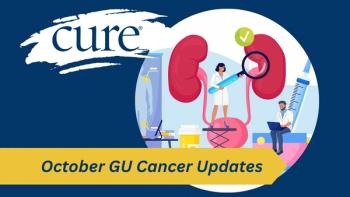
Adding Ibrance to Faslodex Delays Progression of Hormone Receptor-Positive Breast Cancer
By adding the targeted drug Ibrance to the hormonal drug Faslodex, women with previously treated hormone receptor (HR)-positive, HER2-negative breast cancer delayed disease progression by more than five months.
By adding the targeted drug Ibrance (palbociclib) to the hormonal drug Faslodex (fulvestrant), women with previously treated hormone receptor (HR)-positive, HER2-negative breast cancer delayed disease progression by more than five months.
Those were the findings of the phase 3 PALOMA-3 trial, presented May 30 during the 2015 annual meeting of the American Society of Clinical Oncology (ASCO), a gathering of nearly 30,000 oncology professionals taking place in Chicago.
Ibrance targets the proteins CDK 4 and 6, slowing the cell-division process that allows this type of breast cancer to grow. Faslodex is a standard treatment in this setting.
“Palbociclib in combination with fulvestrant is an effective treatment option for women whose cancer progressed on prior endocrine therapy,” said Nicholas C. Turner, consultant medical oncologist at The Royal Marsden and Institute of Cancer Research in London, in a press briefing.
The double-blind multicenter PALOMA-3 study randomized 521 patients with metastatic breast cancer whose disease had progressed on or following endocrine treatment in a 2:1 ratio to Faslodex plus either Ibrance (n = 347) or placebo (n = 174). Faslodex was administered as an intramuscular injection at 500 mg on days one and 15 of cycle one, and then on day one of each cycle thereafter, and patients received oral Ibrance at 125 mg/day continuously for the first three weeks of each cycle, followed by one week off. Treatment cycles were 28 days for both arms. The hormonal drug Zoladex (goserelin) was also administered to pre- and perimenopausal patients.
Baseline patient data was similar between the two arms. The median patient age was 57 and 56 years in the Ibrance and placebo arms, respectively. Patients were stratified by menopausal status, sensitivity to prior hormonal therapy and visceral metastases. In both treatment arms, 79 percent of patients were sensitive to previous endocrine treatment, 60 percent had visceral disease and 79 percent were postmenopausal. One previous line of chemotherapy for advanced disease was permitted, which 33 percent of patients in the overall population had received.
Progression-free survival (PFS) was the primary outcome measure, with secondary objectives focusing on overall survival (OS), response and safety. Following 195 PFS events, the trial was halted in April 2015 after an independent panel determined the study had met its primary endpoint.
Median PFS was 9.2 months with the Ibrance combination versus 3.8 months in the placebo arm (hazard ratio [HR] = 0.422; 95% confidence interval [CI] 0.318-0.560; P <.000001).
“The [PFS] curves separate early and then continue to separate with ongoing follow-up,” said Turner.
The PFS benefit was observed regardless of menopause status and remained consistent across all prespecified patient subgroups.
OS data are not yet mature.
“Palbociclib and fulvestrant in combination was well tolerated,” Taylor said. The most frequently reported toxicities in the Ibrance arm versus the placebo group were neutropenia (78.8 percent vs 3.5 percent), leucopenia (45.5 percent vs 4.1 percent) and fatigue (38.0 percent vs 26.7 percent). “The incidence of febrile neutropenia…was very rare, and was 0.6 percent in both arms,” said Turner.
Turner noted that symptomatic side effects were “largely similar” in the placebo and Ibrance arms, with a small increase in fatigue, alopecia and infections for patients receiving the CDK4/6 inhibitor. Rates of serious side effects were 9.6 percent versus 14.0 percent for the Ibrance versus placebo groups, respectively. Adverse events led to treatment discontinuation in 2.6 percent and 1.7 percent of the cohorts, respectively.
While not approved for the use explored in PALOMA-3, Ibrance has received an accelerated approval by the U.S. Food and Drug Administration as a frontline treatment for postmenopausal women with estrogen receptor (ER)-positive, HER2-negative metastatic breast cancer, based on findings from the phase 2 PALOMA-1 trial.
In the open-label phase 2 study, treatment with Ibrance plus the hormonal drug Femara (letrozole) reduced the risk of disease progression by 51 percent compared with Femara alone. The median PFS with Ibrance was 20.2 versus 10.2 months for Femara alone (HR = 0.488; P = .0004).
The confirmatory phase 3 trial for Ibrance’s accelerated frontline approval is PALOMA-2. This study is comparing the combination of Ibrance and Femara with Femara alone as a frontline treatment for postmenopausal women with ER-positive, HER2-negative advanced breast cancer (NCT01740427).
In a press release, Pfizer, the manufacturer of Ibrance, reported that it plans to enter into discussions with the FDA about expanding the drug’s label to the post-endocrine setting based on the PALOMA-3 data.
“The results of PALOMA-3 are compelling and provide evidence that could potentially expand the role of palbociclib as an innovative first-in-class therapy for patients with metastatic breast cancer,” Mace Rothenberg, Pfizer Oncology’s senior vice president of clinical development and medical affairs and chief medical officer, said in the press release.
Turner NC, Ro J, Andre F, et al. PALOMA3: A double-blind, phase III trial of fulvestrant with or without palbociclib in pre- and post-menopausal women with hormone receptor-positive, HER2-negative metastatic breast cancer that progressed on prior endocrine therapy. J Clin Oncol. 2015;33 (suppl; abstr LBA502).





